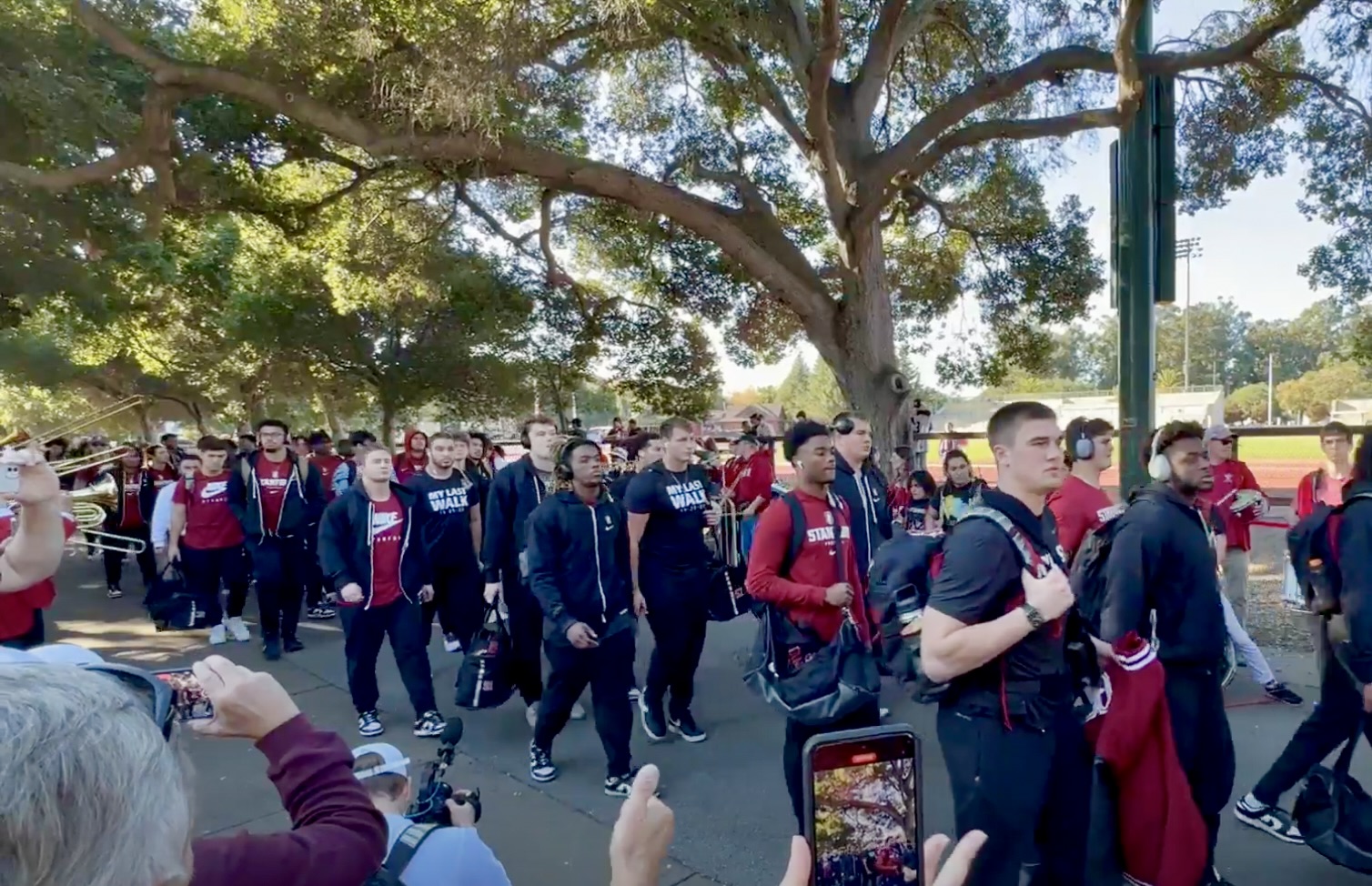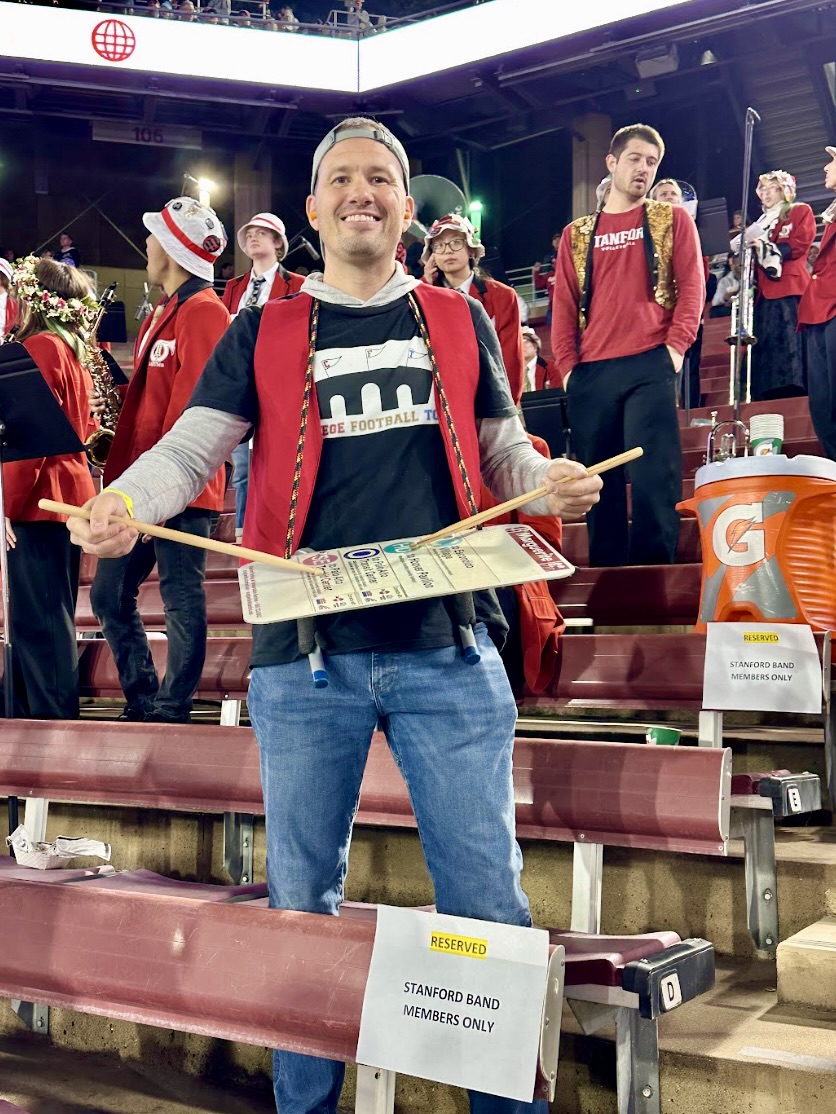Situated between San Francisco and San José in the famous Silicon Valley, Stanford University boasts a rich athletic history. Technically located within its own community of Stanford, California, the university also calls Palo Alto its home. A short distance from Stanford Stadium, Palo Alto brims with shops, restaurants, and a collegiate flair. Stanford is affectionately known as “The Farm” due to being built on agricultural land, and gamedays here explode with a west coast style of pageantry and panache.
Under a canopy of palms and unique varieties of oak, Stanford’s campus offers an inviting scene for pregame tailgating. Pinots and Cabernets are more frequent than Pabst and Coors, and the setting is refined, but no less festive. Cardinal red surges throughout Stanford’s picturesque campus and gameday spirit intensifies as kickoff looms.
A defining aspect of college football is the marching band. Most bands feature well-appointed uniforms and strict, militaristic marching. Not the Leland Stanford Junior University Marching Band. They steer very clear of traditional expression. Known as a scatter band, they burst onto the field sprinting and screaming. Their performances are saturated with wit, humor, props, outlandish costumes, and little doses of mischief. They shirk the rigid, and in short, it’s a damn good time.
Before the band hits the field, they make their way to The Walk, a favorite tradition at Stanford which welcomes the team through a path of Cardinal enthusiasts. Here is where fans may have their first encounter with The Tree. This bizarre mascot layered in colorful branches and leaves frenetically bounces and spins with Stanford spirit. Typically adorned with bulging eyes and voluminous lips, The Tree made its first appearance in 1975. Each year, a new student is selected to wear the iconic costume and redesign it to their liking. Officially, The Tree represents the band, but Stanford has gladly adopted it as its unofficial mascot.
Stanford’s football history runs deep. From playing in the first ever Rose Bowl in 1902 to its annual battle with Cal which is the longest running rivalry in the western United States, this program has made a significant impact. The tree laden campus, the idiosyncratic band, and the festive atmosphere all come together to make Cardinal gamedays a spectacular event.




















